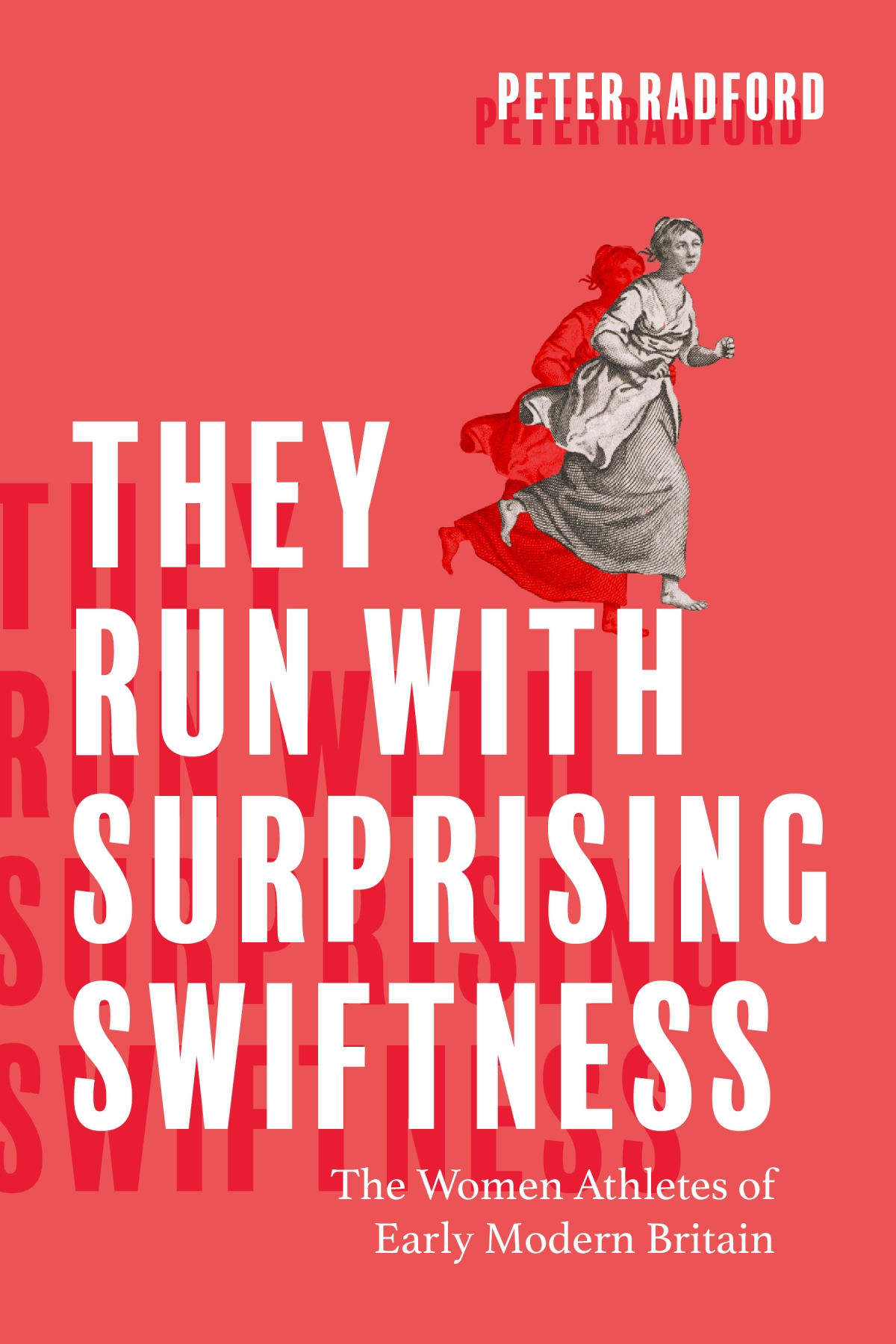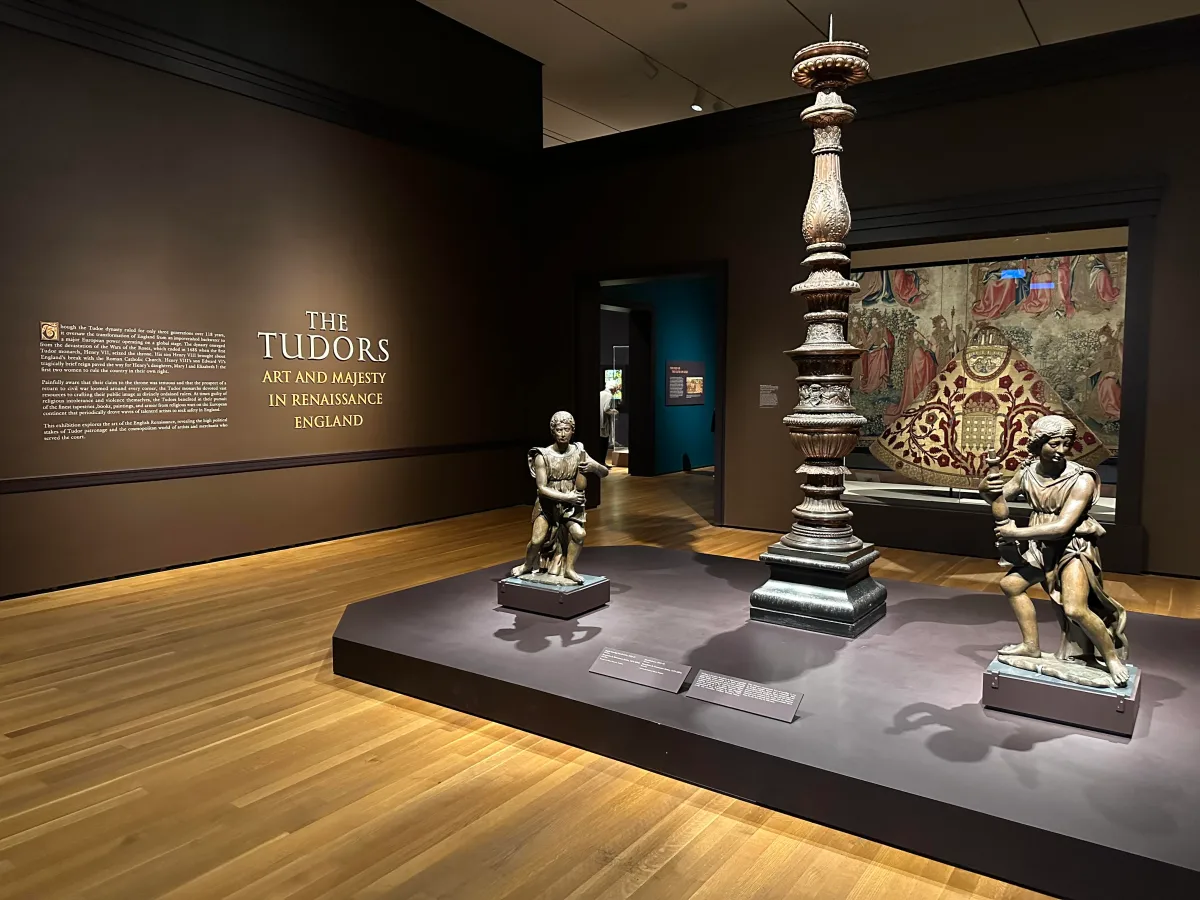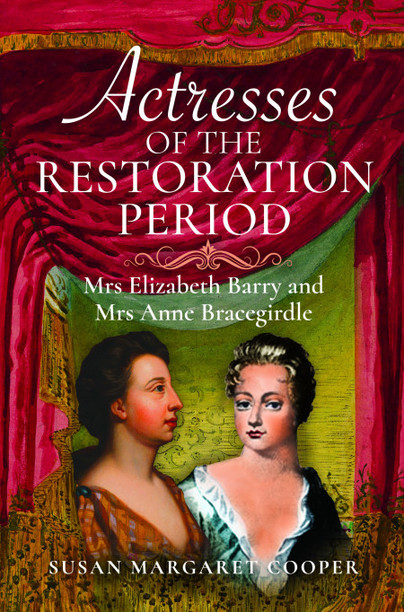They Run with Surprising Swiftness: The Women Athletes of Early Modern Britain. By Peter Radford. Charlottesville and London: University of Virginia Press. 2023. Pp 296. £31.79 (paperback), ISBN 9780813947938.
Readers of Peter Radford’s previous work, including his chapter entitled ‘Better than the Men’ in Exploring the Lives of Women (2018), a collection of essays by members of the Women’s Studies Group 1558–1887, will expect great things from his latest publication. They will not be disappointed.
This fascinating and wide-ranging study of women’s past achievements in sports and athletics, as well as other forms of physical activity demanding various combinations of strength, skill, courage and endurance, incorporates a forceful defence of their ability and right to participate in these activities today. We are currently emerging from a period when women’s participation in sport was restricted on the grounds that strenuous exertion would threaten their capacity for motherhood or even their physical survival. Radford has unearthed evidence of ‘a kind of cultural amnesia’ (208) that seems to have been fostered by nineteenth-century masculine anxieties, obliterating awareness of traditional female sports. The chapter headed ‘Moral Meddling, Cant, and Sheer Humbug: 1825 Onward’ gives a painfully eloquent account of this turning point. As he shows elsewhere in his book, the participants were often subjected to various forms of misogynistic prejudice, but at least the existence of these events was acknowledged.
As in previous work, Radford counters this great forgetting. After producing evidence for women’s robustness in the Neolithic period, and their versatile athleticism in Ancient Greece, he provides detailed studies of events involving female runners, and occasionally walkers, concentrating on the period 1638–1850. A theme that should inspire interest in other feminist historians is the rise and fall of the smock race, and its connections with skimmington rides. He then discusses women’s involvement in football, cricket, prize-fighting (with swords and fists), equestrianism and tennis: women in the last two categories beat the best male professionals.
Some of the book’s findings cast new light on established disciplines. Analyses of the pictures of sporting activities included in the illustrations use information about eighteenth-century practices to distinguish the works of eye-witnesses from copies and products of the artists’ imagination. For example, familiarity with the structure and placement of wickets, knowledge of the rules of best-of-three races, and awareness of what running women actually look like provide tools for art historians seeking to establish the authenticity of sporting pictures. John Collett emerges as a reliable and well-informed creator of original images of female runners and cricketers, which were copied inaccurately by Thomas Rowlandson.
Frances Burney scholars should brace themselves for an outright denial that anything like the twenty-yard race between two enfeebled octagenarian women in Evelina (1778) was ever reported in the eighteenth century: Radford sees it as ‘a product of her fertile imagination’ (31), possibly sparked by a reference in Tobias Smollett’s The Adventures of Ferdinand, Count Fathom (1753) to two aristocratic gamblers running their grandmothers together, i.e. seeing which would live longer. In actuality, age presented fewer barriers to demonstrations of physical prowess: ninety-year-old Mary Wilkinson walked the 290 miles from York to London ‘in five days and three hours with “a keg of gin, and a quantity of provisions on her back”’ (125), while an eighteen-month-old girl ‘walked the length of the Mall (half a mile) in twenty-three minutes’ (90).
Precisely because this work is the result of carefully planned and scrupulously detailed research, it abounds in unexpected discoveries, sometimes appearing initially random: they are the rewards for the author’s determination to follow the evidence. Three examples must suffice. Firstly, everybody acquainted with early modern childbirth customs must have come across references to a ‘groaning cheese’, but how many know exactly what it was? Radford has unearthed a reference to a specimen weighing a hundred pounds that was the first prize for a race between ‘six heavily pregnant brewers’ wives’ who were to run a mile ‘to the top of Arthur’s Seat in Edinburgh’; he then cites ‘an old English tradition in which the father of a newborn baby brought a very large, flat, round cheese for the baby’s christening’: slices would be cut from the centre, and the baby passed through the resulting hole ‘for luck’ (56). Secondly, the importance of accurate time-keeping, especially when wagers were involved, have led the author, after thorough investigation, to conclude that ‘watches were high-status, finely-crafted objects in the eighteenth century, and they recorded time very accurately; cheap and unreliable watches were still sometime in the future’ (118). More directly relevant to the book’s subject, but even more startling, is the discovery that ‘the first example of a football match played on grass, with teams of a fixed number, and played for the benefit and amusement of a crowd’ (179) was a six-a-side women’s event that took place on a bowling green in Bath, probably arranged by Beau Nash, in 1726.
There are a few minor errors in expression and presentation. In the transcription of the motto of the Amateur Athletic Assocation, taken from lines 95 and 96 of Pindar’s 9th Olympian Ode, ποδῶν and ἀκμαί have been run together when they should have space between them, and ideally […] to indicate the omission of an intervening word (115). In the useful appendix, explaining the technicalities of distance measurement, currency and gambling in early modern Britain, the author apparently makes a slip when describing the kind of wager known as a match against time: ‘In the example above, a timekeeper would stand at the finishing line and call “Time” precisely one hour after the start’ (245). Unfortunately, the hypothetical example requires the contestants to run ‘one mile (e.g. from the tavern door to the church door)’ (245) which seems far too short a distance for the time allowed, especially when we reflect that ‘a fifteen-year-old girl from Wrotham ran it in 5 minutes 28 seconds on Saturday July 11, 1795, a record unbeaten in Britain until 20 August 1932’ (119). Perhaps the chosen course should be taken into consideration: how long would the contestants stay in the tavern before they reached its door?
As well as applying extensive and meticulous scholarship to his study of human physical activity in general and sport in particular, the author deploys the practical experience acquired during an athletic career that earned him a world record, two Commonwealth gold medals and two Olympic bronze medals. He can flesh out the briefest account of an event with considerations of how it would have been organized and publicised, how the expenses would be covered, how many heats were involved, or the conditions in which it took place: for example, in 1822, when girls ran races ‘on a wet Wednesday in August’ on Gander Down, to the east of Winchester, ‘it must have been difficult for them on the wet grass, though these were chalk downs and would have drained quickly’ (205).
Professor Radford has yet more to say about the history of women’s physical achievements: on Saturday, October 7, 2023, at the opening seminar of the Women’s Studies Group 2023–24 season, at London’s Foundling Museum, he will present a paper entitled ‘Strong Women in Early Modern Europe: A Counter Narrative’. To readers of this book, this is very good news.
Carolyn D. Williams





